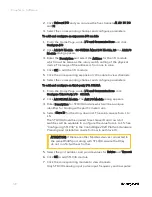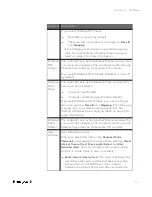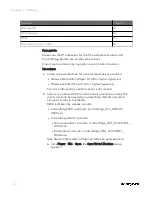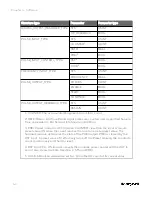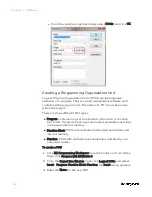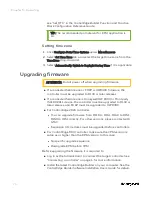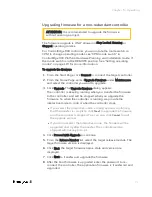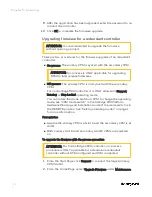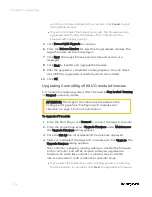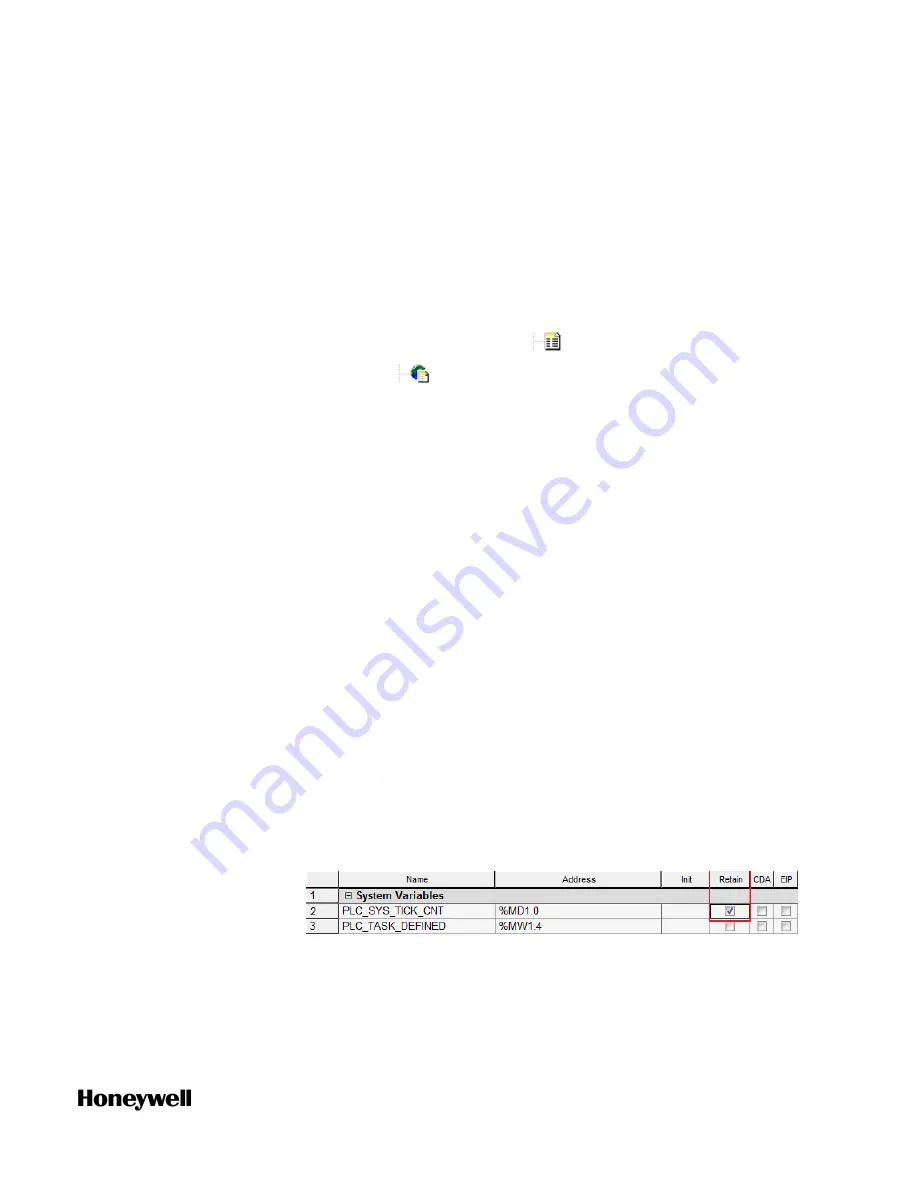
61
Creating a variable
This section introduces how to create and declare variables to
diagnose and monitor the system.
To create a variable
1.
Click
IEC Programming Workspace
from the toolbar, or from Home
Page, click
Program with IEC61131-3
.
2.
You can create local variables or global variables from the
corresponding grid worksheet.
is the grid worksheet for local
variables, and
is the grid worksheet for global variables.
For the following steps, let us take the global variable as an
example.
3.
Double-click
Global_Variables
under
Physical Hardware
, the global
variable sheet appears.
4.
Right-click under the corresponding group, and select
Insert
variable
to add a new I/O variable.
For output channel variables, you must add corresponding read
back variables with suffix “_READBACK” in the
Input I/O Variables
group.
5.
Double-click the
Name
and
Description
fields to modify, and select
Type
and
Usage
from the drop-down lists.
The maximum quantity of characters for a variable name is 30.
IEC address of the I/O variable is generated automatically after
you bind it with an I/O channel and click
Make
. If you add a new
I/O variable by copying an existing bound one in a compiled
project, you should delete the IEC address of the new variable
manually and click
Make
to generate it automatically.
6.
If a variable will be used for Modbus, EFM or PID, you should
select
Retain
for it. Perform either of the following methods:
l
From the variable sheets, select
Retain
.
Chapter 4 - Software
Summary of Contents for ControlEdge 2020 SC-TEPL01
Page 28: ...Figure 3 8 Single star topology 28 Chapter 3 Hardware ...
Page 40: ...40 Chapter 3 Hardware ...
Page 66: ...66 Chapter 4 Software ...
Page 114: ...114 Chapter 6 Communication ...
Page 126: ...126 Notices ...


